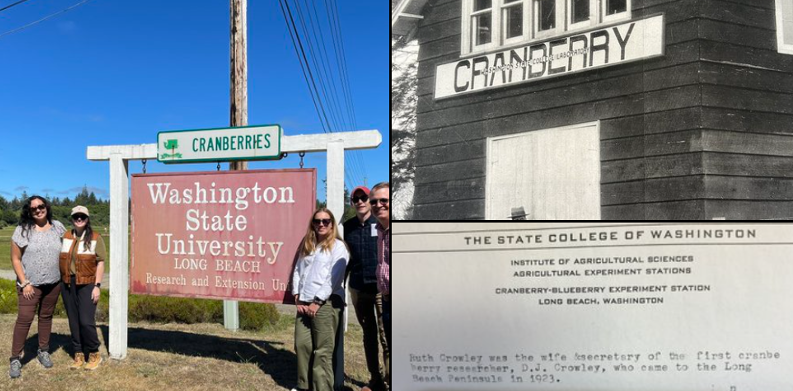A key resource for southwest Washington’s shellfish and cranberry industries, the WSU Long Beach Research and Extension Unit’s research and instructional initiatives are aimed at growers, farmers, and the community – including efforts to provide year-round educational tours available to the public. Among the challenges facing shellfish harvesters and producers are pests. WSU Long Beach is working with business and state organizations to find solutions to control burrowing shrimp and the invasive European green crab. These pests pose a significant threat to Washington State’s oyster and shellfish economy, which are natural crops and one of our earliest exports.
Among the challenges facing shellfish harvesters and producers are pests. WSU Long Beach is working with business and state organizations to find solutions to control burrowing shrimp and the invasive European green crab. These pests pose a significant threat to Washington State’s oyster and shellfish economy, which are natural crops and one of our earliest exports.
At the WSU Long Beach unit, which is jointly located with the state’s Cranberry Museum, self-guided tours are offered that provide a closer look at the crop, the bogs it grows in, and the historical background of the cranberry research facility and this specialty crop which is one of few natural to Washington state. The research unit, led by WSU professor Laura Kraft, is actively researching cranberry weed control, physiology, and best management practices. The WSU Long Beach Center has been supported in it’s100-year history by the cranberry and shellfish industry and local community. The Cranberry Institute, Ocean Spray Cranberries, Washington Commission on Pesticide Registration, Washington Department of Fish and Wildlife, British Columbia Cranberry Marketing, USDA, Northwest Center for Small Fruits, Environmental Protection Agency, and the Washington Cranberry Commission are among the organizations that contribute to WSU Long Beach’s research efforts.
The WSU Long Beach Center has been supported in it’s100-year history by the cranberry and shellfish industry and local community. The Cranberry Institute, Ocean Spray Cranberries, Washington Commission on Pesticide Registration, Washington Department of Fish and Wildlife, British Columbia Cranberry Marketing, USDA, Northwest Center for Small Fruits, Environmental Protection Agency, and the Washington Cranberry Commission are among the organizations that contribute to WSU Long Beach’s research efforts.
